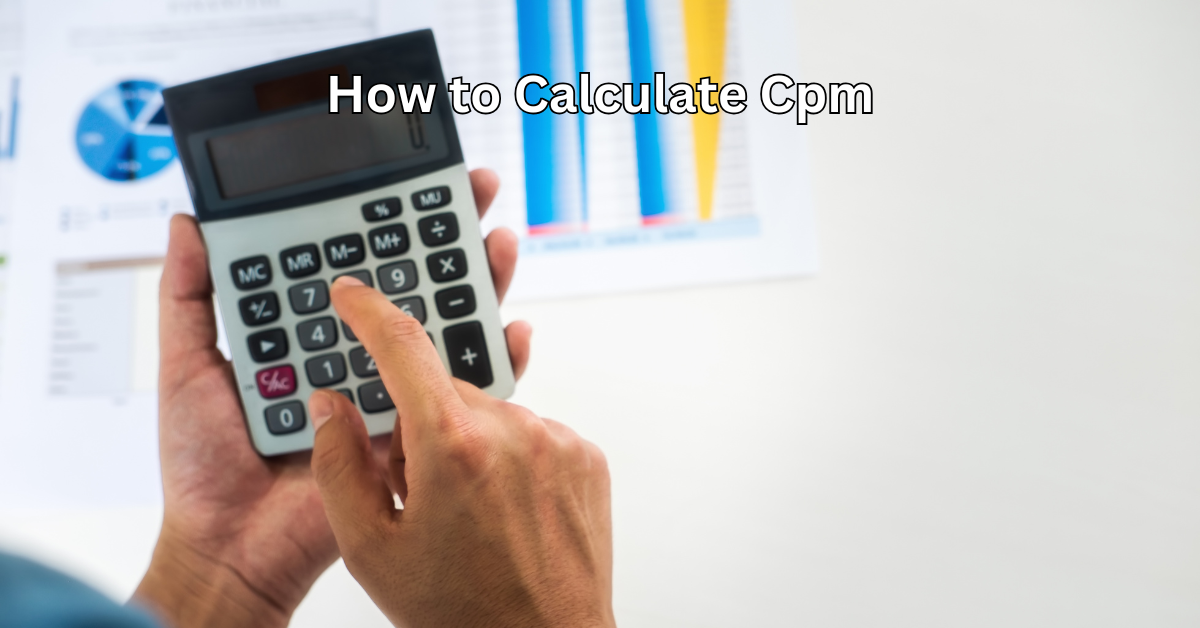How to Calculate CPM: The Complete Guide to Cost Per Mille
What is CPM (Cost Per Mille)?
CPM is a fundamental advertising metric that represents the cost an advertiser pays for one thousand impressions of their ad. The term “mille” comes from Latin meaning “thousand.”
CPM vs Other Pricing Models:
- CPM – Pay per 1,000 impressions (best for brand awareness)
- CPC – Pay per click (best for website traffic)
- CPA – Pay per action (best for conversions)
CPM is particularly important for:
- Display advertising campaigns
- Social media advertising (Facebook, Instagram, LinkedIn)
- Video advertising (YouTube, streaming platforms)
- Programmatic ad buying
The CPM Calculation Formula
The standard formula to calculate CPM is:
CPM = (Total Ad Spend ÷ Total Impressions) × 1,000
Breaking Down the Formula:
| Component | Description | Example Value |
|---|---|---|
| Total Ad Spend | Total amount spent on the campaign | $500 |
| Total Impressions | Number of times ad was displayed | 250,000 |
| Multiplier | Constant to calculate per thousand | 1,000 |
Real-World Example:
If you spend $750 on a Facebook ad campaign that generates 500,000 impressions:
CPM = ($750 ÷ 500,000) × 1,000 = $1.50
This means you’re paying $1.50 for every 1,000 times your ad is shown.
For quick calculations, use our free CPM calculator tool.
How to Use a CPM Calculator
While manual calculations work, our CPM calculator makes the process instantaneous and error-free.
Step-by-Step Guide:
-
Enter your total ad spend
Input the total amount you’ve spent on your advertising campaign (e.g., $1,200)
-
Input your total impressions
Enter the number of times your ad was displayed (e.g., 400,000)
-
Click “Calculate CPM”
Our tool will instantly compute your Cost Per Mille
-
Analyze your results
Compare against industry benchmarks (see below) to evaluate performance
Benefits of Using Our CPM Calculator:
- No manual calculations needed
- Instant results with 100% accuracy
- Mobile-friendly interface
- Free to use with no signup required
2024 CPM Benchmarks by Platform
Understanding average CPM rates helps you evaluate your campaign performance:
| Advertising Platform | Average CPM Range | Best For |
|---|---|---|
| Facebook Ads | $5 – $15 | Brand awareness, lead generation |
| Instagram Ads | $7 – $20 | Visual products, younger demographics |
| Google Display Network | $2 – $10 | Wide reach, remarketing |
| YouTube Ads | $10 – $30 | Video content, product demonstrations |
| LinkedIn Ads | $30 – $100+ | B2B marketing, professional services |
| Programmatic Display | $1 – $8 | Large-scale campaigns, targeted audiences |
Note: These ranges vary based on factors like industry competition, targeting specificity, ad quality, and seasonality.
10 Proven Strategies to Lower Your CPM
Implement these tactics to reduce your Cost Per Mille and get more value from your ad spend:
1. Refine Your Targeting
Overly broad audiences increase competition and CPM. Use detailed demographic, interest, and behavioral targeting.
2. Improve Ad Quality Score
Platforms reward engaging, relevant ads with lower CPMs. Test different creatives and messaging.
3. Experiment With Placements
Some ad positions (like Stories or Feed) often have different CPM rates. Test multiple placements.
4. Leverage Retargeting
Ads shown to warm audiences (website visitors, engaged users) typically have lower CPMs.
5. Use Lookalike Audiences
Expand your reach to similar users while maintaining relatively low CPMs.
6. Adjust Campaign Timing
Run ads during less competitive periods (weekdays vs weekends, off-hours).
7. Optimize for Right Objectives
Brand awareness campaigns often have lower CPMs than conversion-focused ones.
8. Increase Budget Strategically
Some platforms offer better rates at certain budget thresholds (testing required).
9. Test Different Ad Formats
Carousel ads, video ads, and interactive ads may deliver different CPM performance.
10. Monitor Frequency
High frequency (same user seeing your ad too often) can increase CPM. Cap frequency when possible.
Track your CPM improvements using our CPM calculator tool after implementing these strategies.
Frequently Asked Questions About CPM
What’s considered a good CPM rate?
A “good” CPM depends on your industry, platform, and campaign goals. Generally:
- $1-$5 = Excellent
- $5-$10 = Good
- $10-$20 = Average
- $20+ = Potentially high (needs optimization)
Compare against industry benchmarks for proper context.
Why is my CPM suddenly increasing?
Common reasons for CPM spikes include:
- Increased competition in your niche
- Seasonal demand (holidays, events)
- Changes to your targeting parameters
- Ad fatigue (same creative shown too often)
- Platform algorithm updates
How often should I check my CPM?
Recommended monitoring frequency:
- Daily: For active, high-budget campaigns
- Weekly: For most ongoing campaigns
- Monthly: For long-term trend analysis
Use our CPM calculator to track changes over time.
Can I calculate CPM in Excel or Google Sheets?
Yes! Use this simple formula:
=(Ad_Spend_Cell/Impressions_Cell)*1000
For example, if ad spend is in A2 and impressions in B2:
=(A2/B2)*1000
For quick calculations without setup, use our online CPM calculator.
Key Takeaways: Mastering CPM Calculations
- CPM Formula: (Total Ad Spend ÷ Total Impressions) × 1,000
- Industry Averages: Range from $2 (programmatic) to $100+ (LinkedIn B2B)
- Optimization: Better targeting, creatives, and timing can significantly lower CPM
- Tracking: Regular monitoring helps identify trends and opportunities
- Tools: Use our free CPM calculator for instant, accurate calculations
Disclaimer: The calculators and tools on icalcnow.com are for informational purposes only and do not constitute financial advice. Please consult a professional before making any decisions.

